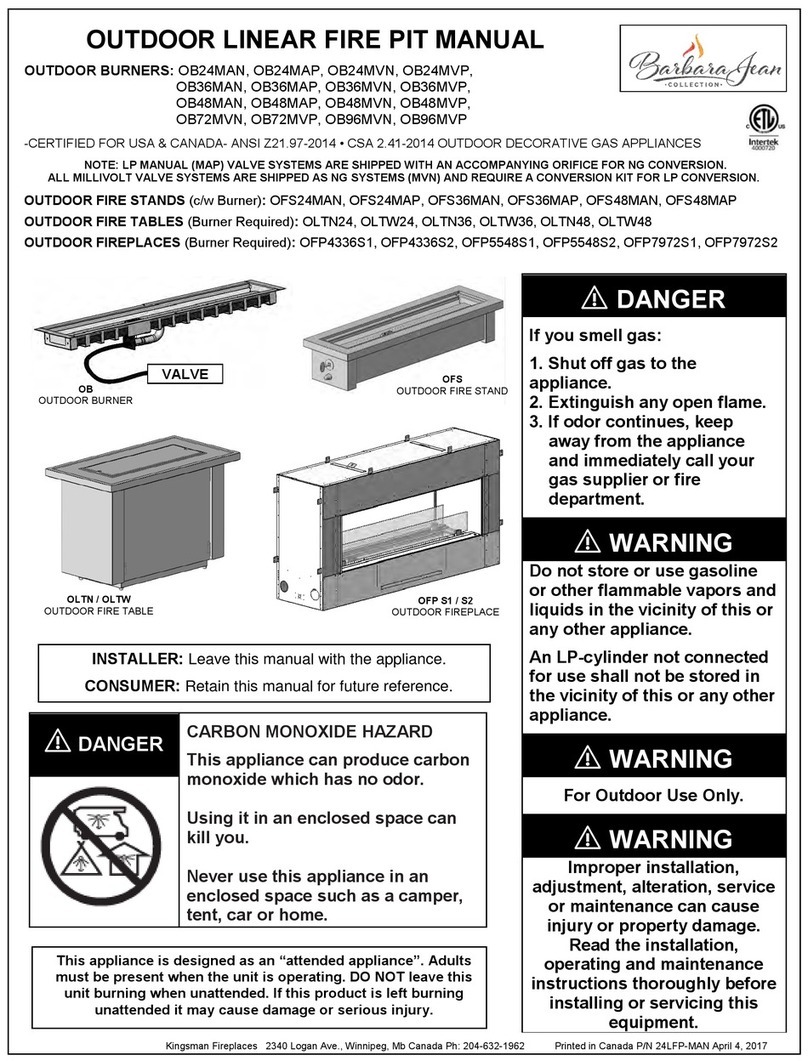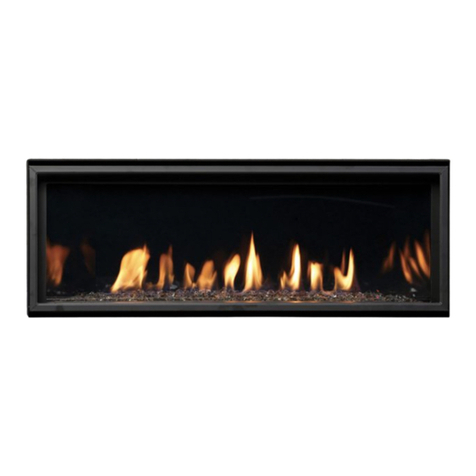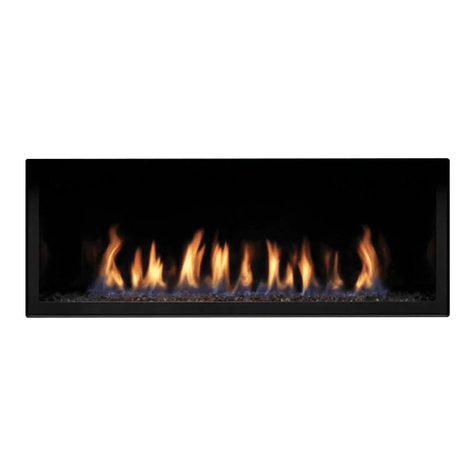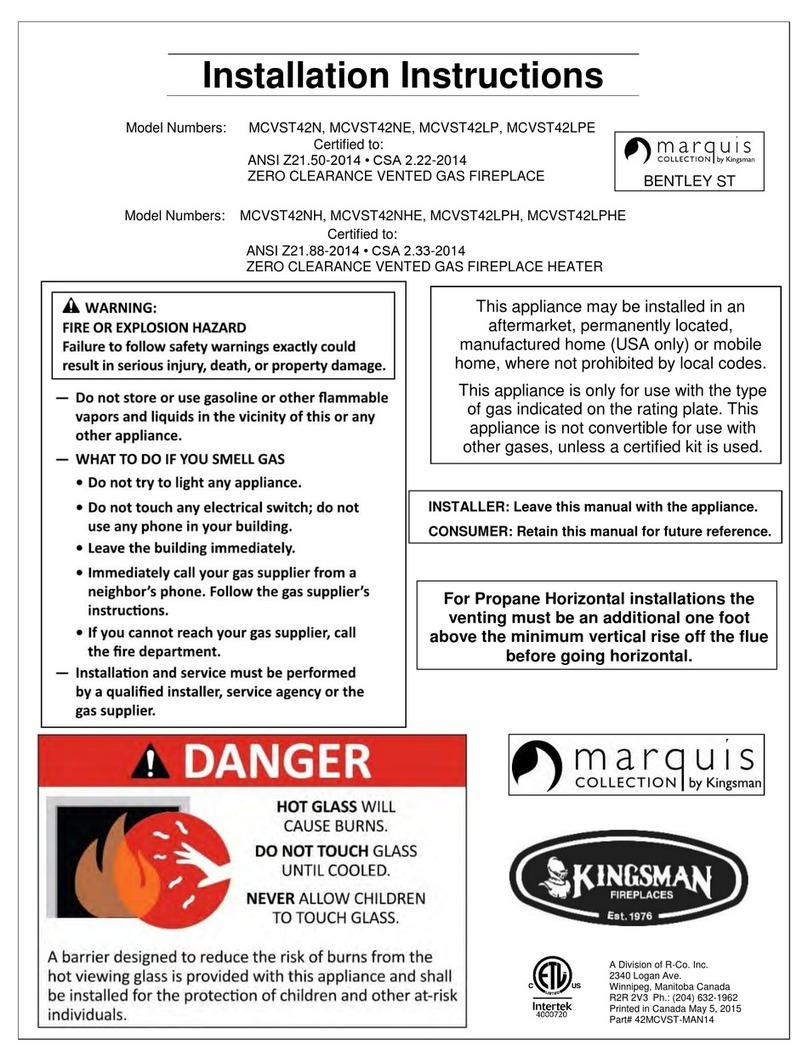Kingsman VFI30 User manual
Other Kingsman Indoor Fireplace manuals

Kingsman
Kingsman MQRB4436 User manual
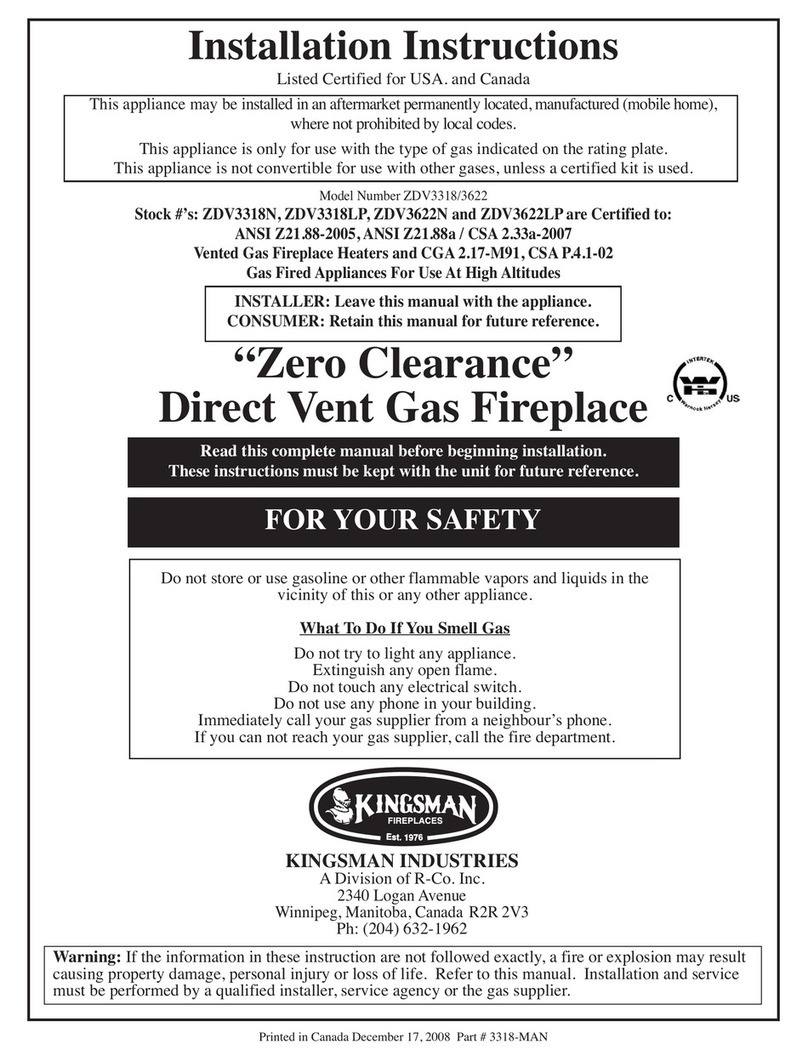
Kingsman
Kingsman Zero Clearance User manual

Kingsman
Kingsman marquis IDV24 User manual

Kingsman
Kingsman ZDV5245 User manual
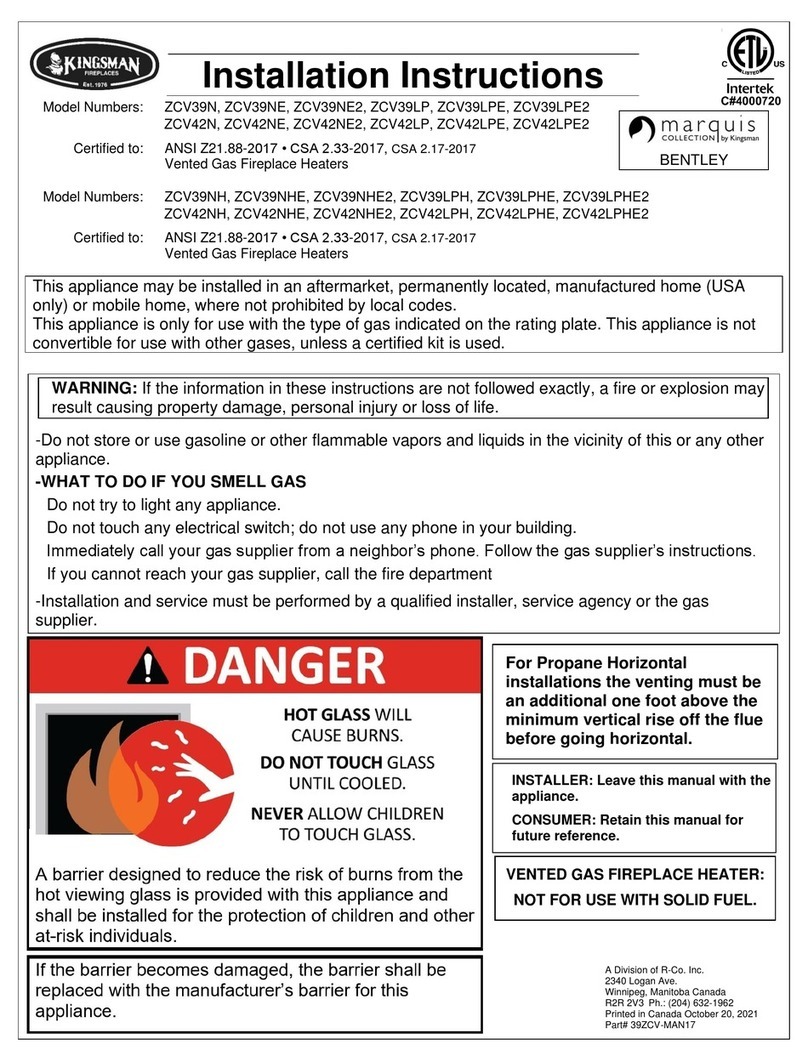
Kingsman
Kingsman marquis BENTLEY ZCV39LPE2 User manual
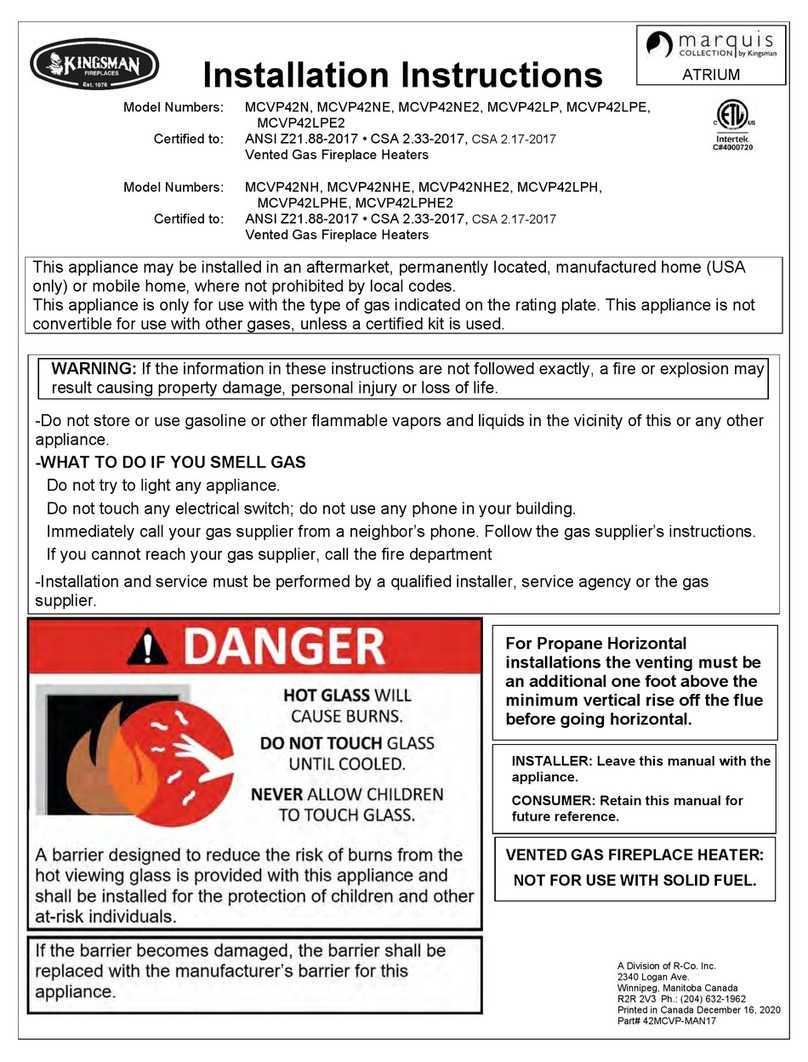
Kingsman
Kingsman Marquis MCVP42NE2 User manual
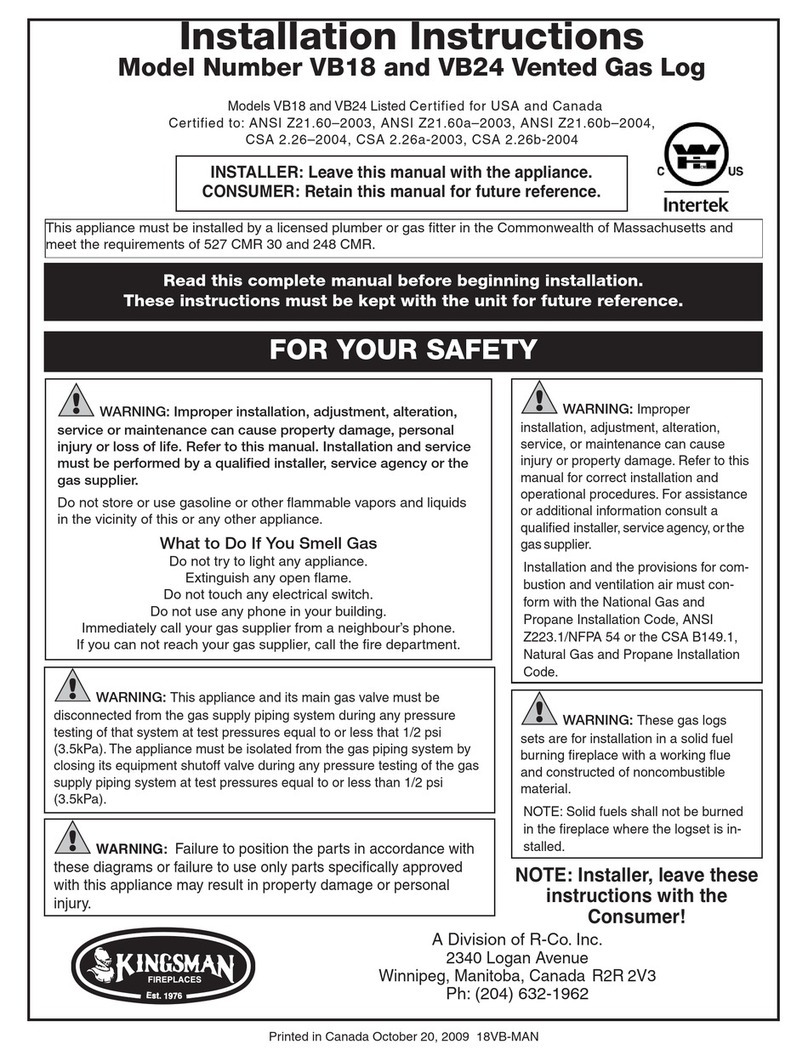
Kingsman
Kingsman VB18 User manual

Kingsman
Kingsman MQVL60NE User manual
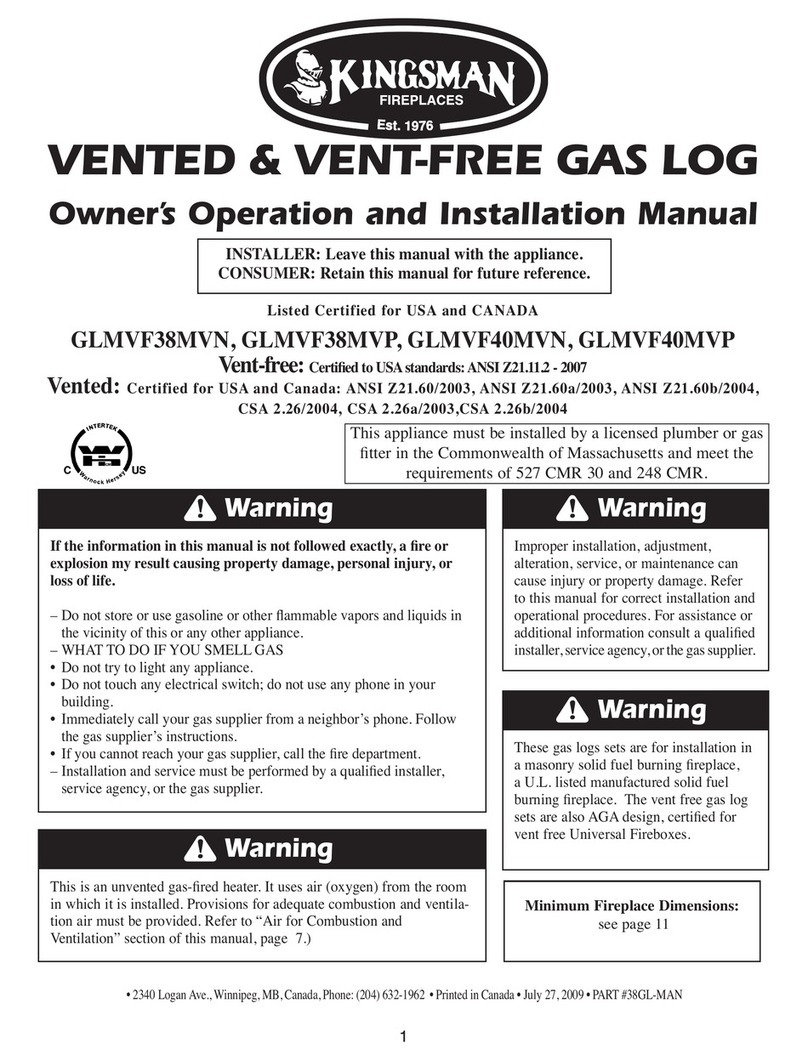
Kingsman
Kingsman GLMVF38MVN Operation manual
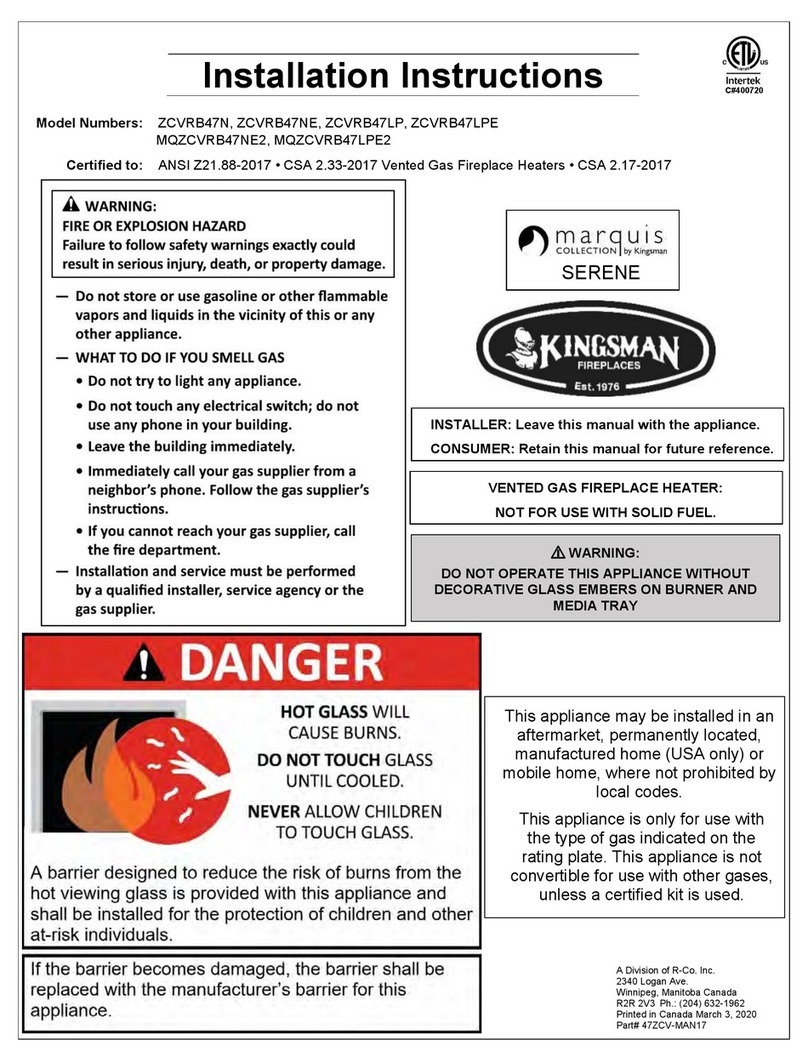
Kingsman
Kingsman ZCVRB47N, ZCVRB47NE, ZCVRB47LP, ZCVRB47LPE MQZCVRB47NE2,... User manual

Kingsman
Kingsman ZDV6000 User manual
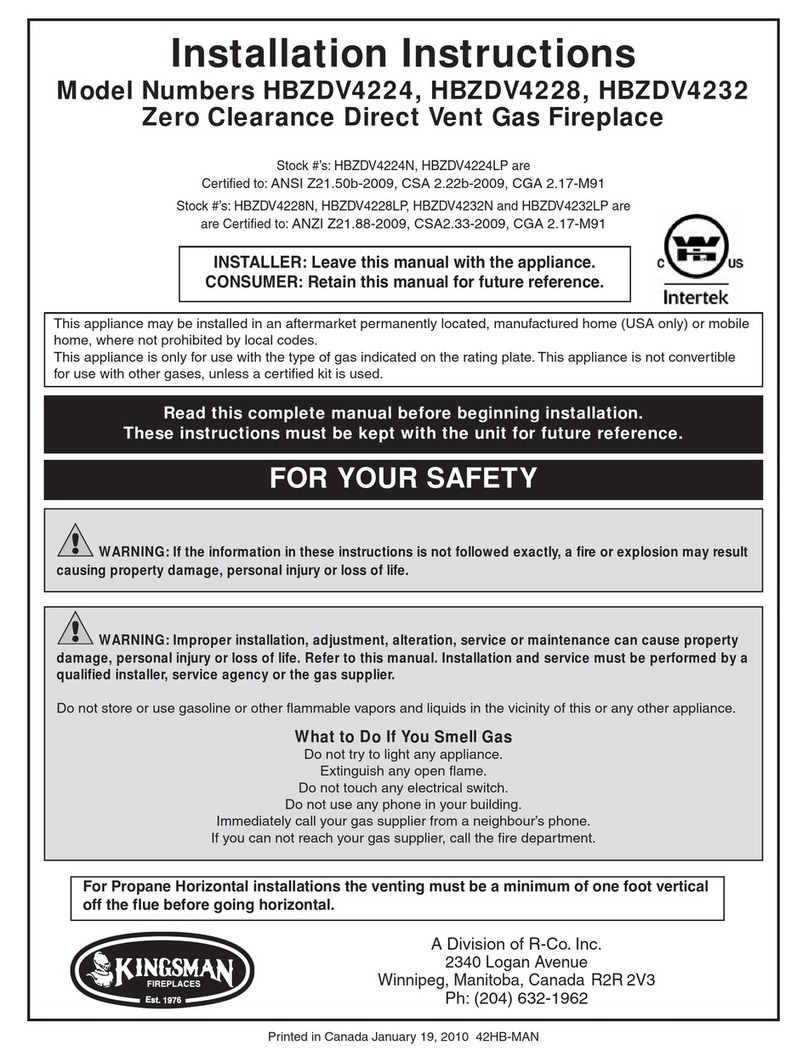
Kingsman
Kingsman HBZDV4224 User manual

Kingsman
Kingsman Marquis SOLACE User manual
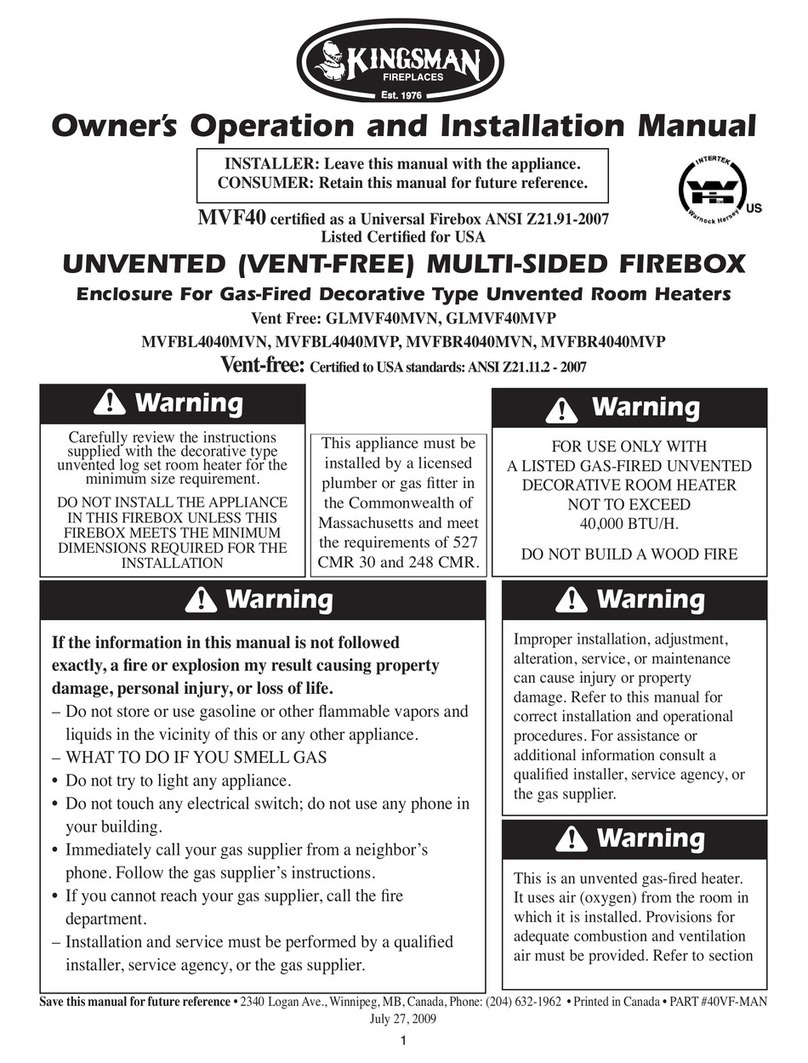
Kingsman
Kingsman GLMVF40MVN Quick start guide
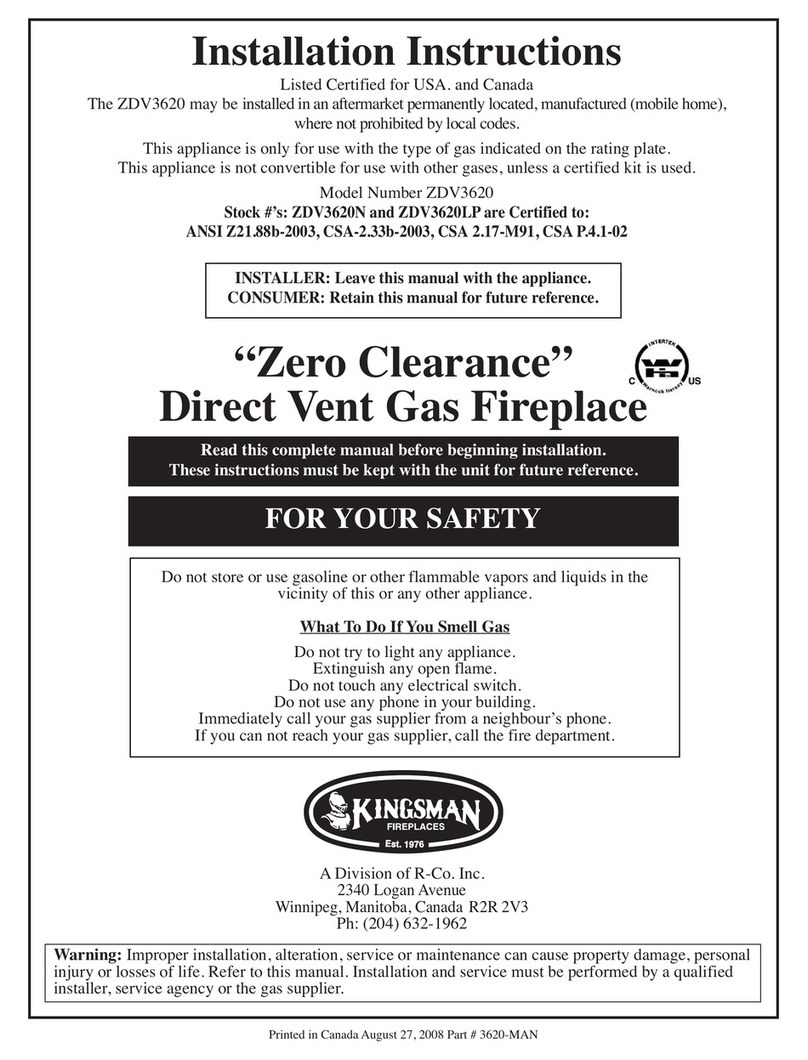
Kingsman
Kingsman ZDV3620 User manual
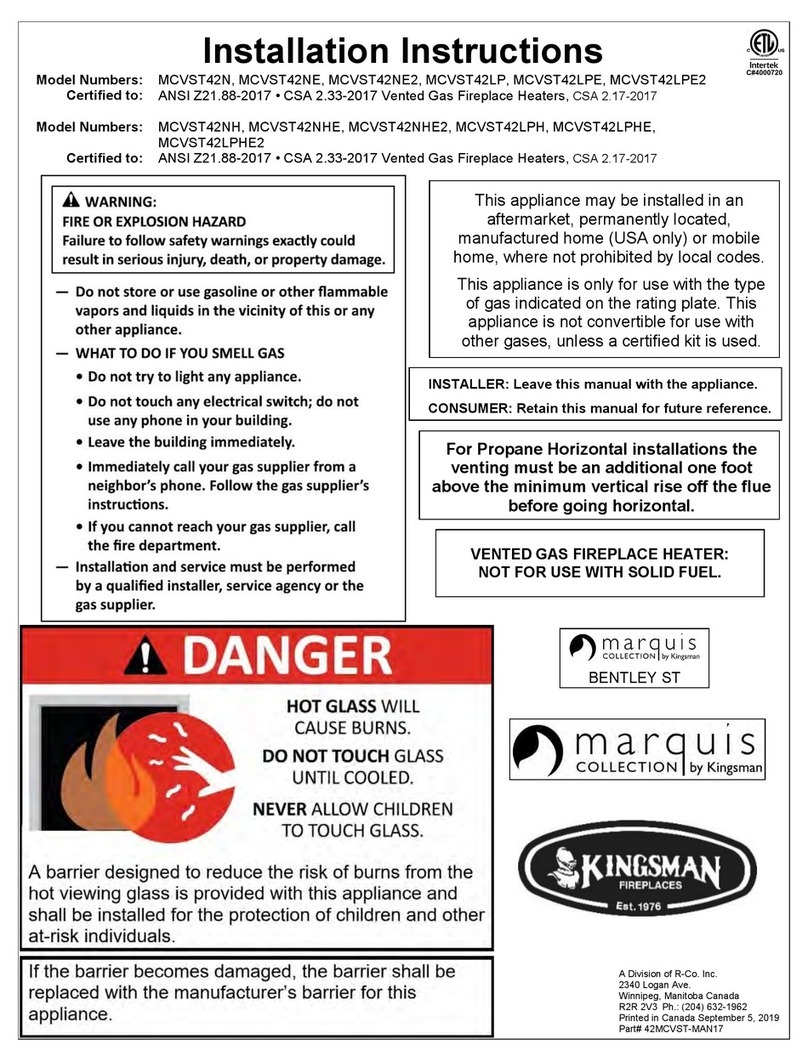
Kingsman
Kingsman MCVST42N User manual
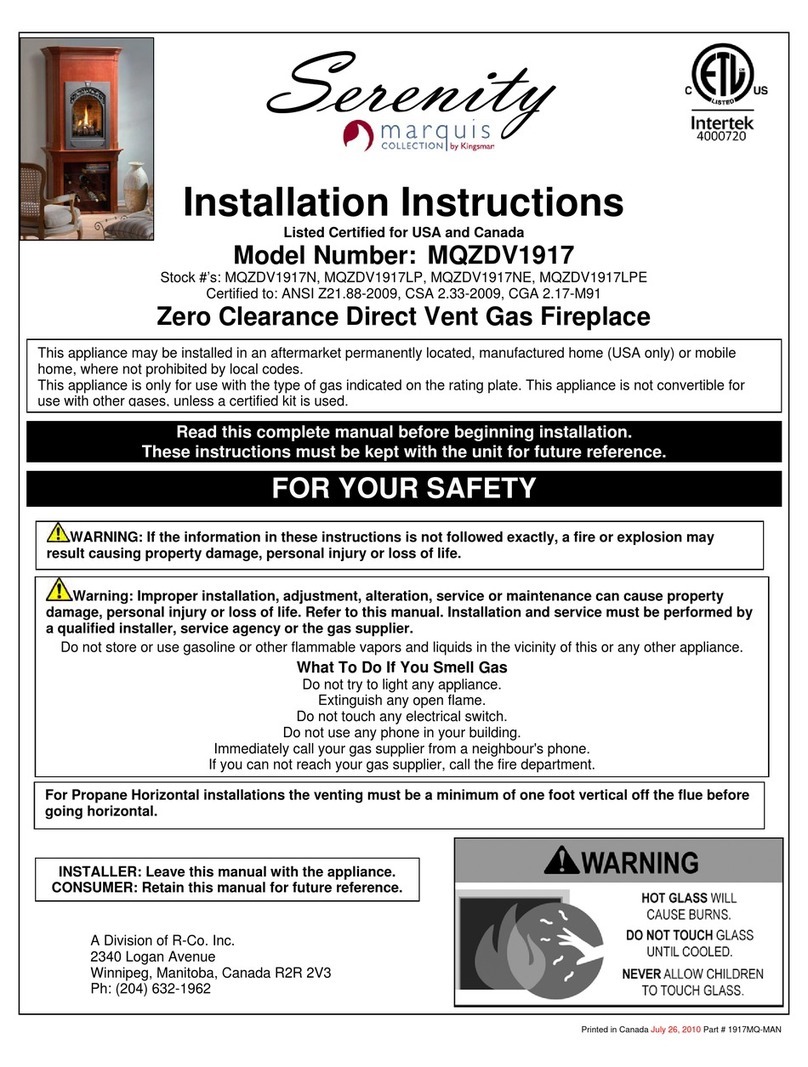
Kingsman
Kingsman Marquis Serenity MQZDV1917 User manual
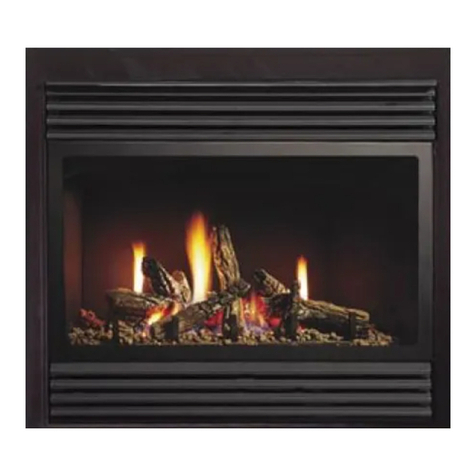
Kingsman
Kingsman MQZDV3318 series User manual
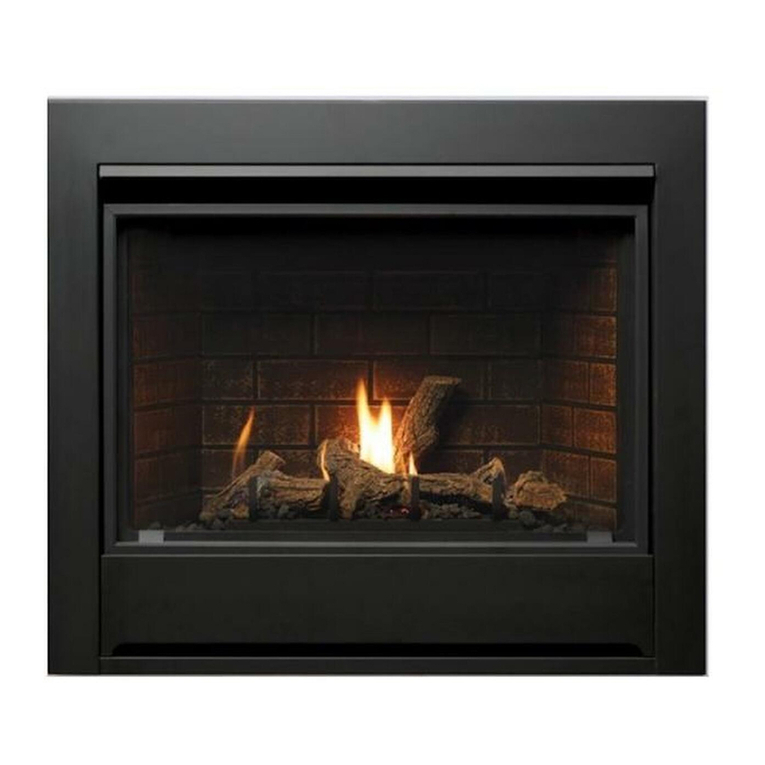
Kingsman
Kingsman ZDV3318 Series User manual
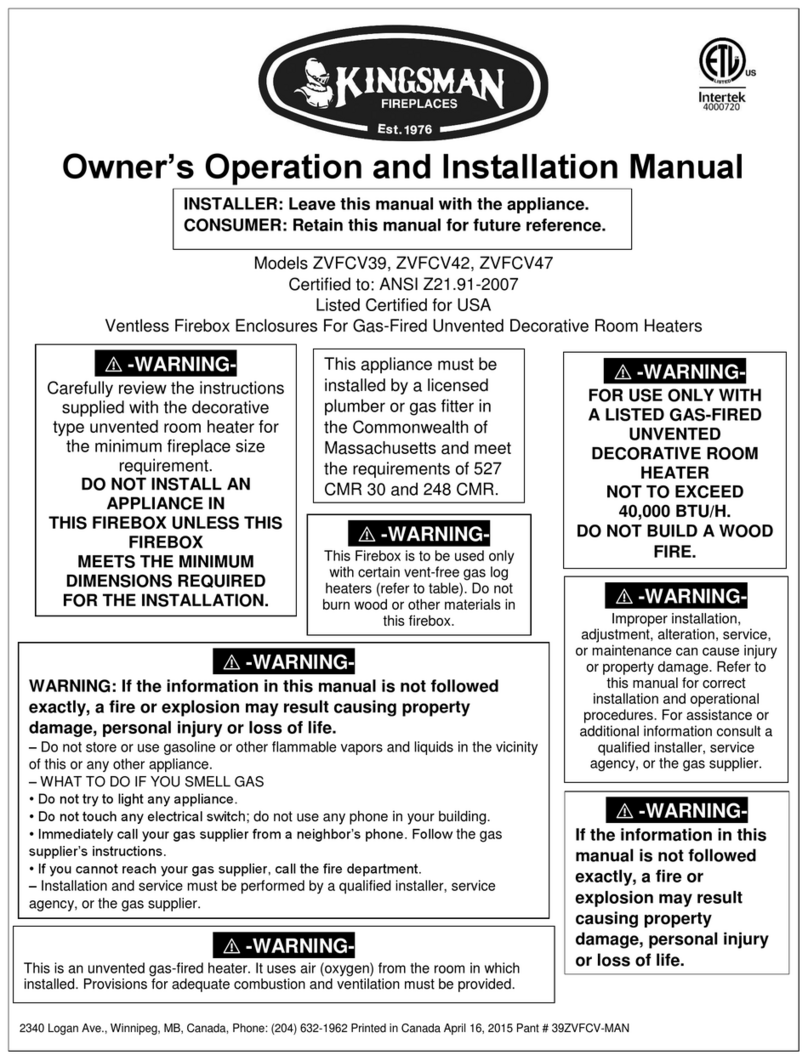
Kingsman
Kingsman ZVFCV39 Quick start guide
Popular Indoor Fireplace manuals by other brands

Napoleon
Napoleon NEFL42CHD-1 manual

Masport
Masport WOOD FIRE installation guide

JAYLINE
JAYLINE SS280 Installation & operation instructions

Heat-N-Glo
Heat-N-Glo SL-32S Installation

kozy heat
kozy heat Bellingham 52 quick start guide

Paragon Fires
Paragon Fires ROOM SEALED INSET LIVE FUEL EFFECT GAS FIRE owner's manual

Monessen Hearth
Monessen Hearth LCUF32CR-B Installation & owner's manual

PuraFlame
PuraFlame Galena owner's manual

Dimplex
Dimplex Toluca Deluxe instruction manual

SEI
SEI TENNYSON FA8544AO Assembly instructions

Dru
Dru G25 installation manual

Capital fireplaces
Capital fireplaces Designline DL700 Installation and user instructions

IronStrike
IronStrike VINTAGE VINT-DVS-U Installation and operation

ACR Heat
ACR Heat HERITAGE N25 Installation and operating instruction manual

European Home
European Home HVF-42 Installation, operation and owner's manual

Quadra-Fire
Quadra-Fire MTVERNINSAE-MBK Owner's manual operation & care

Harman Home Heating
Harman Home Heating Accentra Insert Installation & operating manual

Trimline Fires
Trimline Fires Zircon 1024 installation instructions
